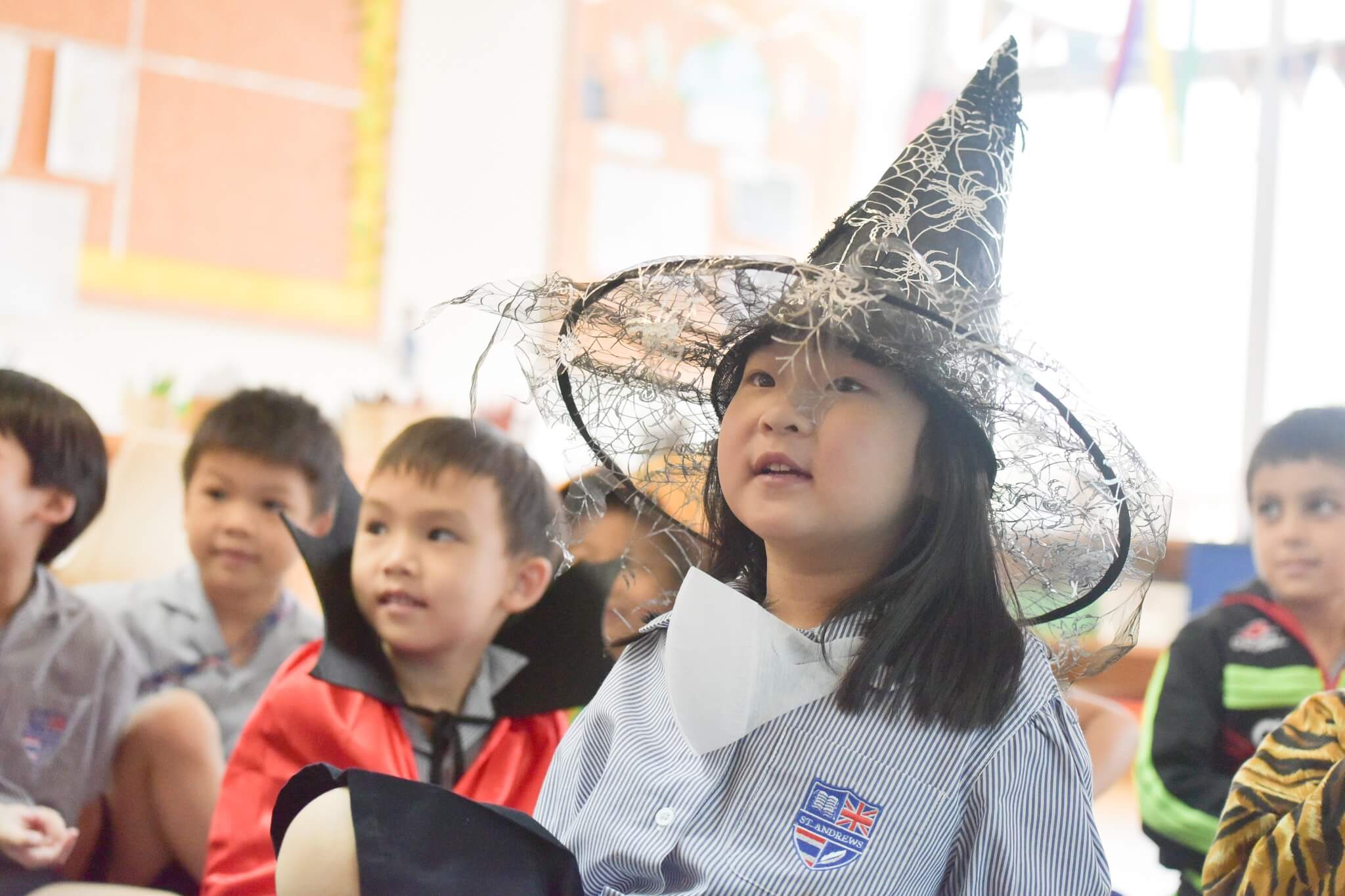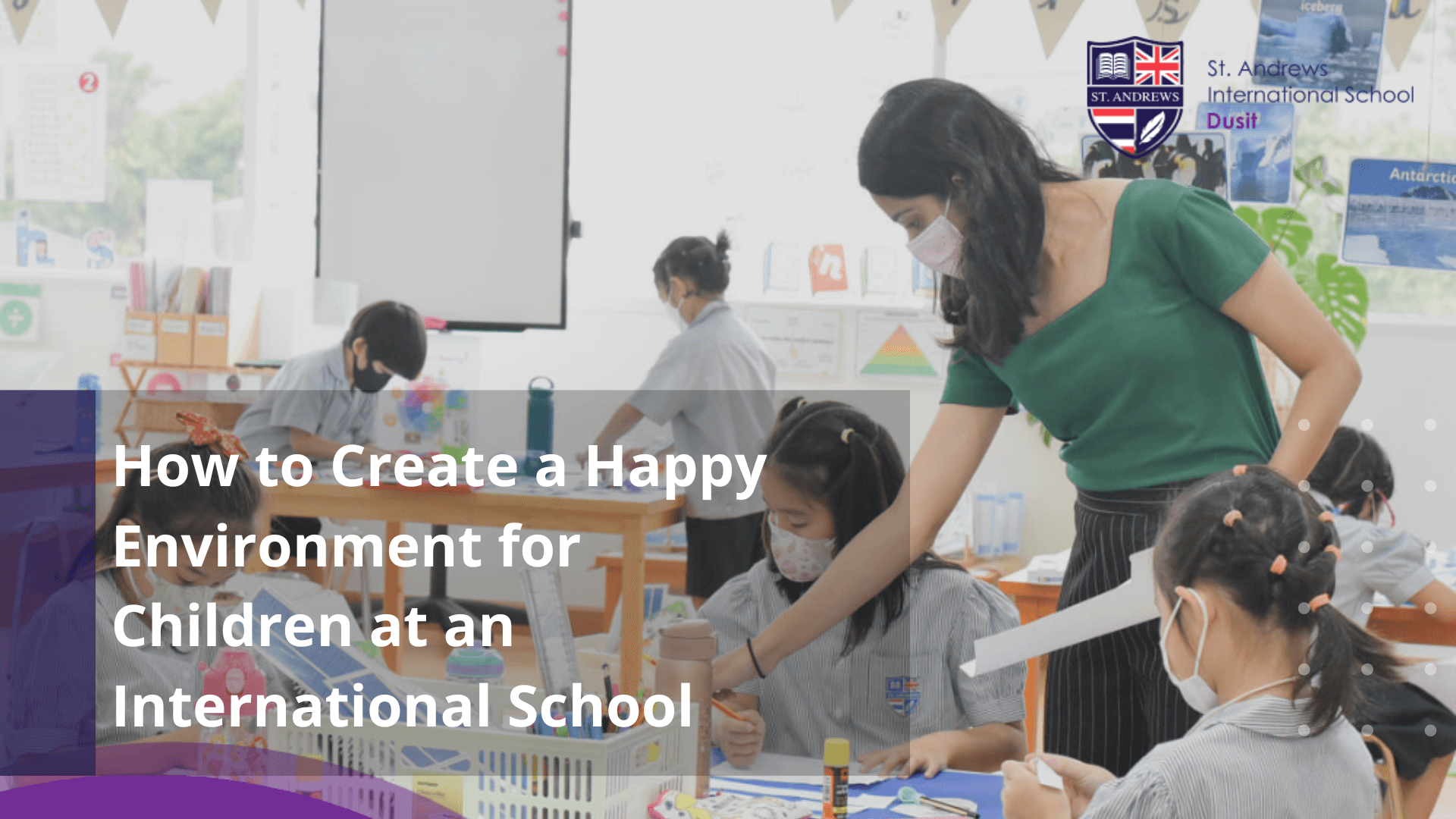A child primarily goes to school in order to learn, even if (or especially if) it’s at an international school. Unlike Bangkok’s more standardised schools, the St. Andrews Dusit International School follows the English curriculum and Sixth Form Education.
However, that’s not to say St. Andrews should automatically provide a stricter, academics-first environment for the sake of ensuring academic excellence down the line.
Quite the opposite. Studies show that you can maximise the educational potential of your child in a happier school environment that gives them a healthier, more positive outlook towards learning.
The UNESCO Happy Schools Project
Back in 2014, UNESCO Bangkok started the Happy Schools Project (HSP). It focuses on improving the learning experiences of children with an alternative happier approach to academics.
UNESCO’s HSP was tried out in three countries in the Asia-Pacific—Thailand, Japan and Lao PDR.
Published back in 2016, the HSP programme by UNESCO Bangkok provides the framework of what makes a school a happy place.
HSP fosters a lifelong love of learning in kids by taking the pressure to succeed out of the equation. The happier the child gets the likelier he’ll perform academically. Success then becomes natural instead of forced.
What Does a UNESCO “Happy School” Look Like?
A happy school is where kids can organically learn via growth mindsets, socialising, and collaborative effort while also establishing good relationships between one another and the instructors as well as their parents and school colleagues.
The HSP has multiple criteria divided into three categories that make up the mechanisms that drive blissful and joyful school environments: Places, People and, Processes.
The three categories talk about how essential supportive school-based relationships are and how it’s important to engage in collaborative learning experiences. They also focus on safe, stimulating school environments.

How Does St. Andrews Dusit Go About Creating a Happy Environment?
How does a school like St. Andrews Dusit go about prioritising happiness in their daily teachings and the students’ collective learning experiences on campus?
The faculty goes about classes and instructions in a holistic manner then takes care of the details to ensure academic excellence in a sustainable community environment that includes staff, school leaders, parents, and teachers.
- Addressing Academic Challenges: Just recently, COVID-19 disruptions served as a major impediment to today’s school leaders, learners, and teachers. Even during the disruptions of the pandemic in the past few years, the children were able to learn online since St. Andrews Dusit also offers high-tech teleconference-based learning.
- Changing the Narrative Positively: Andrews Dusit follows the framework for happy schools by changing the deficiency narrative present in other academics-focused schools and leading by example on the potential achievements possible in fostering a happiness-based school campus that teaches holistic learning.
- Negativity Stunts Learning: Having a survival of the fittest mindset in school stunts learning and has kids sabotaging each other to compete for higher grades and academic status. It’s better for the child to learn in both non-cognitive and cognitive ways for him to identify his unique abilities and maximise what he brings to the table.
- The Positive Growth Mindset: Andrews is also a believer of the child’s positive growth mindset. Instead of breeding weakness by having children specialise in getting high grades, it’s better to combat negativity by nurturing the character of the child, giving him high moral fibre on top of a complete academic skill set.
- Dynamic, Collaborative Learning: Instead of encouraging rote memorisation designed to ace tests but doesn’t actually affect long-term learning of lessons, St. Andrews instead prioritises dynamic, collaborative learning between students as well as better engagement between the children and the teacher to improve learning outcomes.
- Anchoring Lessons with Practical Uses: Rote memorisation has the child spouting out facts and figures that they don’t retain. A happy learning environment where the child is allowed to explore and experiment, allows them to assign practical experiences to what they learn.
- Happiness in Long-Distance Learning: During the pandemic-induced long-distance learning instituted by schools that allowed students to still learn their subjects by apps such as Zoom and WhatsApp, St. Andrews found a way for children to happily learn in pandemic times.
- Engagement with the Local Community: By making the well-being and mental health of the child the priority of the school, learning comes naturally to them with a better quality of life. St. Andrews does activities like sharing happy faces and heart emojis as well as memories on Zoom to combat the societal grief of COVID-19.
- The Human Connection: The secret to any happy environment is establishing human connections. St. Andrews encourages its teachers to engage their pupils, the children, in a relaxed and healthy environment, allowing them to become more confident and comfortable when doing their multiplication tables or speaking in English.
- Dealing with Issues Beyond Your Control: Certain issues beyond the school’s control or your own control as parents can disrupt the child’s schooling, such as wealth inequality, health issues, social media toxicity, massive refugee movement, the pandemic, the climate crisis, highly visible geopolitical conflicts worldwide, and so forth.
- A Quiet Confidence: If the parents and children can be assured that they’re getting practical knowledge out of the school that results in a well-rounded individual with a bright future and career, that quiet confidence can be considered the basis for school happiness.
- Happy Environments Teach Resilience: Instead of adding schoolwork and an unhappy school environment as part of the list of things to lower your children’s happiness index, our following of the UNESCO programme can alleviate the pupils’ worries and have them focus more on their future to improve the world.

Defining and Creating a Happy School Environment
What makes a school environment “happy” exactly? Part of it is its approach to academics. St. Andrews Dusit is one of the most academically sound international schools in the region.
Happy teachers also result in happy learners. Happy kids learn better because they aren’t forced to perform academically. Academic excellence is instead just a natural consequence of healthy, joyous learning.
It specifically prioritises school environment happiness. This type of learning helps teachers focus more on engagement and positivity for better academic outcomes.
Instead of pressuring children to learn with the threat of bad grades and punishment lurking around the corner, schools like St. Andrews instead target the wellbeing, engagement, and sense of belonging of the child.
Teachers in such schools can also share things online like pronunciation audio and video files by students for interactive learning.
Learn More by Visiting the St. Andrews Dusit Campus
If you wish your child to have a better understanding of the world at large while under a happy and healthy school environment, schedule an in-person appointment to go to St. Andrews Dusit by filling up this online form. You can also go on a personalised interactive virtual campus tour for good measure.
Parents, teachers, and educational experts have begun to realise the value of holistic education at the St. Andrews learning centre—this on top of world-class international school offerings that give them the edge on future job applications locally and abroad.



